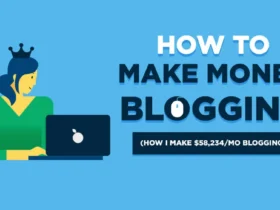In today’s digital landscape, social media marketing (SMM) has become an essential tool for businesses looking to build brand awareness, engage with their audience, and drive sales. For beginners, diving into the world of social media marketing can feel overwhelming, but with the right strategies and tools, anyone can master it. This step-by-step guide will walk you through the essentials of starting and succeeding with social media marketing.
Why Social Media Marketing Matters
Social media platforms like Facebook, Instagram, LinkedIn, Twitter, TikTok, and Pinterest have billions of active users worldwide. These platforms offer unparalleled opportunities to:
- Connect with Your Audience: Build relationships and interact directly with your customers.
- Boost Brand Visibility: Get your brand in front of potential customers.
- Increase Website Traffic: Drive visitors to your website through targeted posts.
- Generate Leads and Sales: Convert followers into paying customers.
Social media marketing is not just about posting content; it’s about building a strategy that aligns with your business goals.
Step 1: Understand Your Audience
The foundation of any successful social media strategy is a deep understanding of your target audience.
How to Identify Your Audience
- Demographics: Consider age, gender, income, education, and location.
- Interests and Preferences: What are their hobbies, values, and challenges?
- Online Behavior: Identify the platforms they use most and when they are active.
Tools to Use
- Google Analytics: For insights into your website visitors.
- Social Media Insights: Platforms like Facebook and Instagram offer built-in analytics.
- Surveys and Polls: Gather direct feedback from your audience.
Step 2: Choose the Right Platforms
Not every platform is suitable for your business. Select platforms where your target audience is most active and where your content can thrive.
Popular Platforms and Their Uses
- Facebook: Great for building a community and sharing diverse content types.
- Instagram: Ideal for visually appealing content, such as photos and videos.
- LinkedIn: Best for B2B marketing and professional networking.
- Twitter: Perfect for real-time updates and industry news.
- TikTok: Excellent for short-form, creative, and viral video content.
- Pinterest: Effective for niche markets like home decor, fashion, and recipes.
Step 3: Set Clear Goals
Establishing clear objectives ensures your social media efforts are purposeful and measurable.
Also Read
Common Social Media Goals
- Increase Brand Awareness: Grow your followers and impressions.
- Engage with Your Audience: Encourage likes, comments, shares, and direct messages.
- Drive Website Traffic: Use posts and ads to lead users to your website.
- Generate Leads and Sales: Use promotional campaigns to convert followers into customers.
Make sure your goals follow the SMART criteria (Specific, Measurable, Achievable, Relevant, Time-bound).
Step 4: Create a Content Strategy
Content is the heart of social media marketing. Your content should resonate with your audience and reflect your brand’s identity.
Types of Content
- Educational Content: Tutorials, how-to guides, and infographics.
- Entertaining Content: Memes, videos, and engaging stories.
- Promotional Content: Sales, discounts, and product launches.
- User-Generated Content: Repost photos, reviews, and testimonials from your customers.
- Behind-the-Scenes Content: Share glimpses of your team, work process, or office culture.
Content Calendar
Plan your posts in advance using a content calendar. Tools like Buffer, Hootsuite, or Trello can help you organize and schedule posts.
Step 5: Optimize Your Profiles
Your social media profiles are often the first point of contact for potential customers. Make a great impression with these optimizations:
- Profile Picture: Use a high-quality logo or photo.
- Bio: Clearly describe your business and include keywords.
- Website Link: Add a clickable link to your website or landing page.
- Contact Information: Ensure your email, phone number, or address is up-to-date.
Step 6: Engage With Your Audience
Engagement is a two-way street. Responding to comments, messages, and mentions fosters a loyal community.
Tips for Engagement
- Be Prompt: Respond to messages and comments quickly.
- Use Polls and Questions: Encourage interaction through stories and posts.
- Show Appreciation: Acknowledge your followers by liking and replying to their comments.
- Collaborate: Partner with influencers or other brands to expand your reach.
Step 7: Run Paid Advertising Campaigns
While organic growth is valuable, paid advertising can accelerate your results.
Types of Social Media Ads
- Boosted Posts: Extend the reach of your high-performing posts.
- Carousel Ads: Showcase multiple images or videos in a single ad.
- Video Ads: Create engaging short-form or long-form video content.
- Lead Generation Ads: Collect emails or other contact details directly from the ad.
Use the targeting features on platforms like Facebook Ads Manager to reach specific demographics and interests.
Step 8: Track and Analyze Your Performance
Measuring your results is crucial to understanding what works and refining your strategy.
Key Metrics to Monitor
- Engagement Rate: Likes, comments, shares, and clicks.
- Reach and Impressions: The number of people who saw your content.
- Conversion Rate: The percentage of users who took a desired action.
- Follower Growth: The increase in your followers over time.
Analytics Tools
- Built-In Platform Tools: Facebook Insights, Instagram Insights, Twitter Analytics.
- Third-Party Tools: Google Analytics, Sprout Social, and SEMrush.
Step 9: Stay Updated on Trends
Social media trends evolve quickly. Staying ahead of trends can give your brand a competitive edge.
- Follow Industry News: Stay updated with blogs, podcasts, and influencers in the marketing space.
- Experiment with New Features: Test new features like Instagram Reels or LinkedIn Stories.
- Adapt Your Strategy: Regularly update your content strategy based on new trends.
Step 10: Be Consistent
Consistency is key to building a recognizable and reliable brand presence.
- Post Regularly: Stick to a consistent posting schedule.
- Maintain Brand Voice: Ensure all content aligns with your brand’s tone and style.
- Monitor Feedback: Learn from your audience’s feedback to improve.
Social media marketing is a powerful tool for businesses of all sizes. By following this step-by-step guide, beginners can confidently create and implement a social media strategy that drives results. Remember, success on social media takes time and experimentation, so stay patient and keep refining your approach.



















Leave a Reply